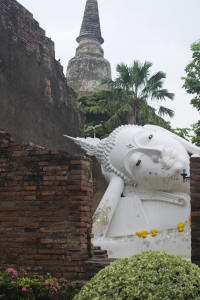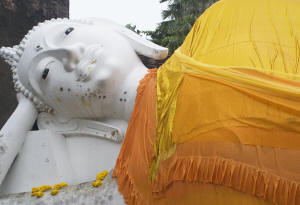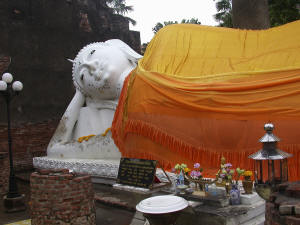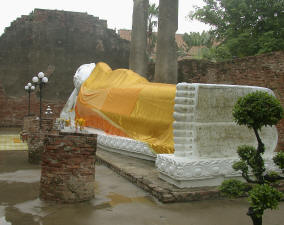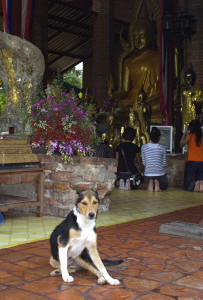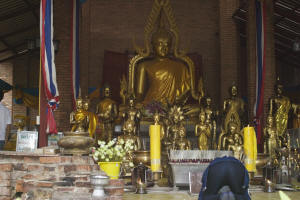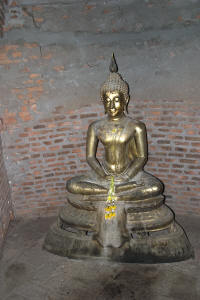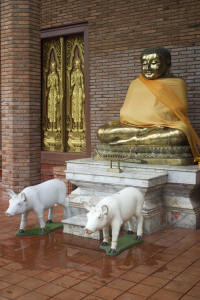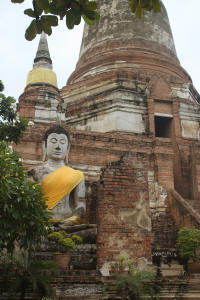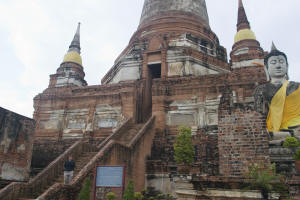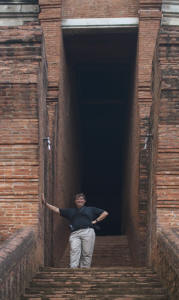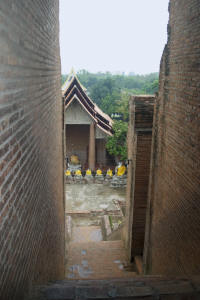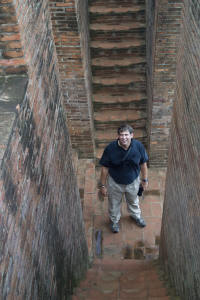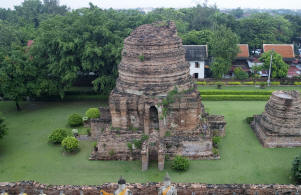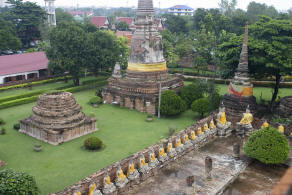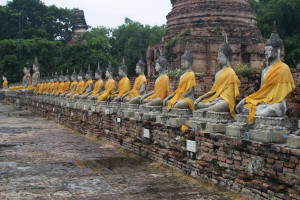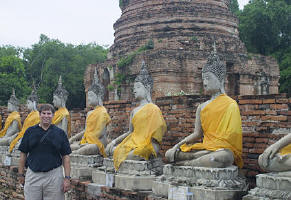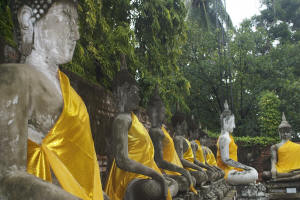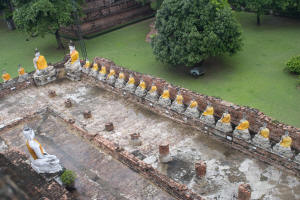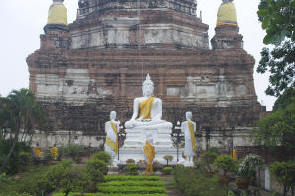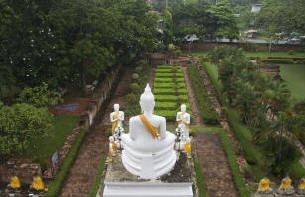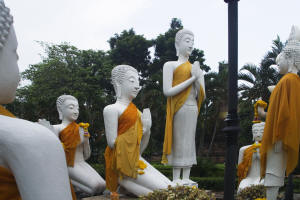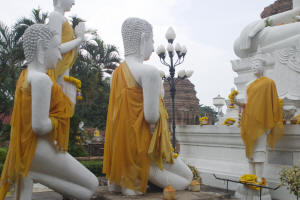Oct 7 - Fri.
We were up early for breakfast. The rain had left a hot, muggy
morning. Chet, our guide, met us at 7am. We checked out of the
Peninsula, deposited our luggage with Chet and crossed the river to the
Shangri-La Hotel where our boat departed for Bang Pa In. Our ultimate
destination today is Ayutthaya.
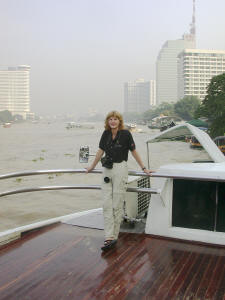
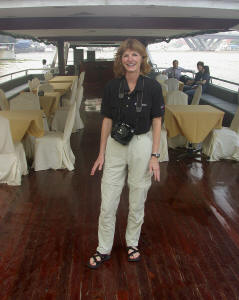
The boat trip was approximately 4 hours up river. We were the deadhead part
of the trip since most tourists go by bus north and then return by river as a
dinner cruise. Besides ourselves, two Japanese young women were the only
passengers this morning. We would enjoy the luxury of having the boat to
ourselves for tea and the lunch buffet (destined for the dinner buffet, later
that afternoon).
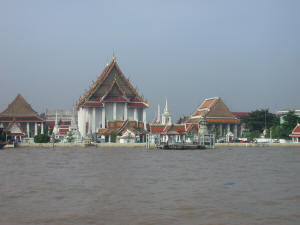
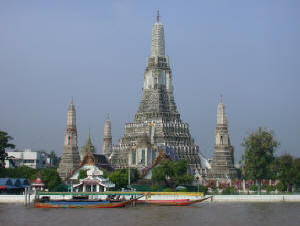
Many temples, both old and new, are situated along the river.
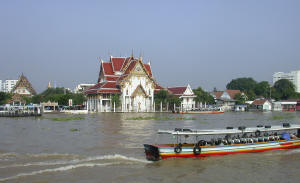
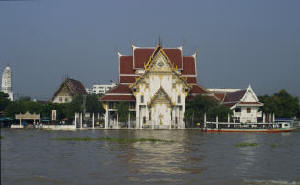
As we moved from the city to the more rural areas, we noted a number of
military complexes and government buildings including the Ministry of Commerce
situated along the river. The river provides the means for the movement of
goods in commerce, access to water for manufacturing and transportation and
large sites for businesses like Singha Beer and Pepsi Cola.
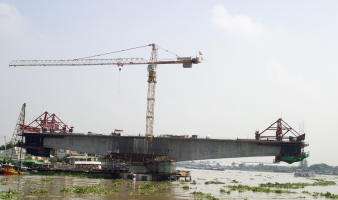
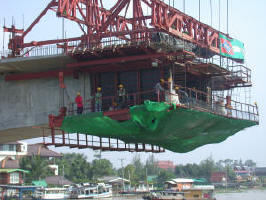
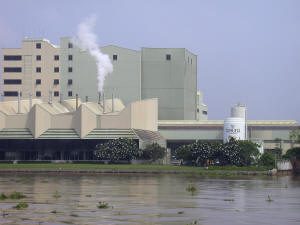
The river also provides housing along its banks and access to water for
washing, cooking and travel.
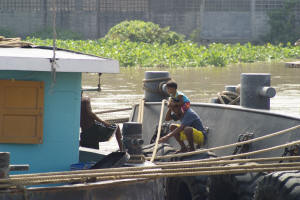
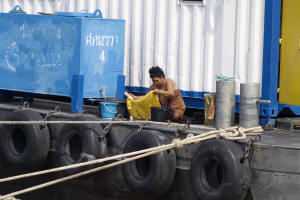
After finishing lunch, we arrive at Bang Pa-In where we are met by Chet and
our driver at the dock of the recently completed Queen's handicraft educational
complex, Bang Sai Folk Arts and Craft Center. The buildings house teaching
facilities as well as marketing and sales offices for craftspeople throughout
Thailand.
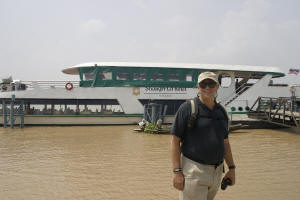
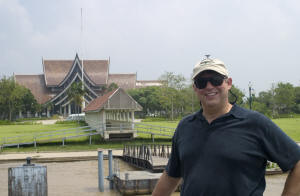
After a short 20 minute drive, we arrive at King Rama IV and V's summer
palace. It was King Rama V's interest in European architecture that led to the
design of several of the buildings on the grounds.
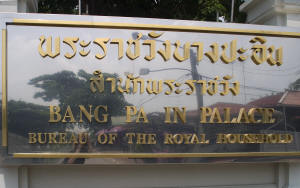 <
<
The Palace designed in the Italian Renaissance style serves as a place for
state receptions today.
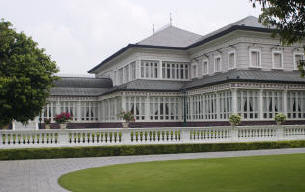
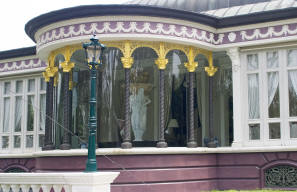
The Aisawan Thippaya is a beautiful Thai pavilion built in 1876 and modeled
on the Phra Thinang Aphon Phimok Prasat in the Grand Place in Bangkok.
The pavilion is often dismantled and shipped to represent the country at world
expositions.
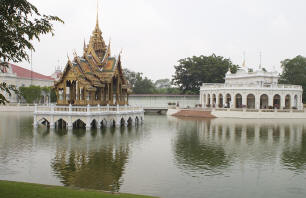
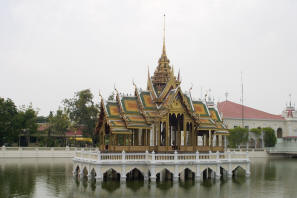
The circular building to the right of the pavilion in Russian style is the
reception hall.
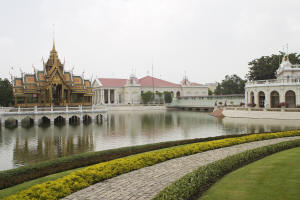
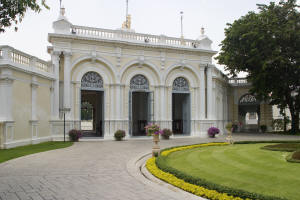
Nearby is the elephant feeding area illustrated by the topiary display.
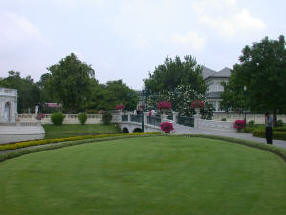
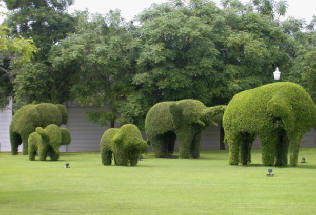
A gift from the Chinese is the Peking Palace containing a collection of jade
and Ming porcelain.
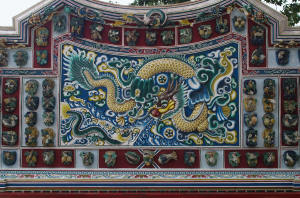
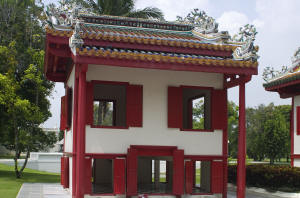
The Royal Observatory built in 17C in a Portuguese-style was used by King
Mongkut, extremely interested in observing the heavens.
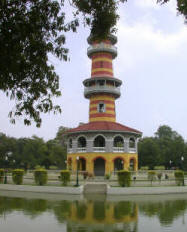
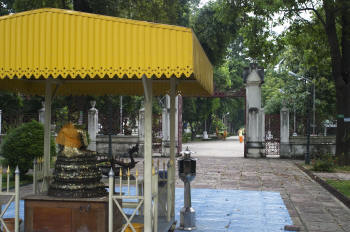
A cable car across the river takes us to Wat Nivet Thamaprawat, built in a
Gothic style. It looks like a Christian church- however, it is really a
Buddhist temple.
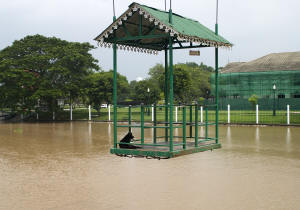
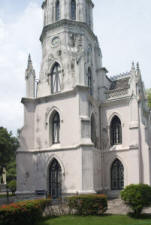
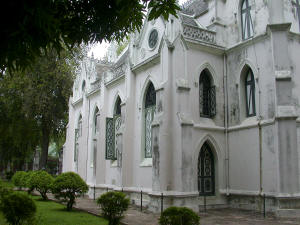
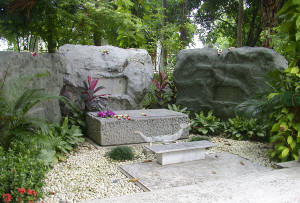
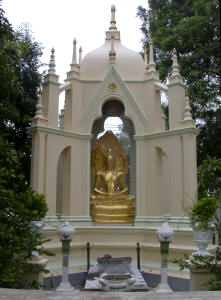
We drove on to Ayutthaya, originally founded in 1351 by King U-Thong and
located at the intersection of the Chao Phraya River, Pa Sak River and the
Lopburi River. The town became the seat of power in 1350 of the kingdom
and then grew to become one of the most beautiful capital cities in the world,
controlling trade routes in the region from 16-17C. It was conquered
several times by the Burmese until 1767 when the Burmese conquered the city and
left it in ruins. Late 18C, the Burmese were routed out and a new capital
was formed at Thonburi. King Rama I removed materials and artifacts from
Ayutthaya when he ascended the throne in Bangkok. Now the town is on the
UNESCO World Heritage list. Today the city is a lively cross cultural
town.
Our first stop outside the inner city was Wat Phanan Choeng. This
working wat is visited by many pilgrims who purchase robes for offerings to the
large gold Buddha (19 m high). Surrounding the uboset are many other
beautiful Buddha figures.
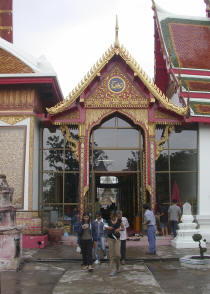
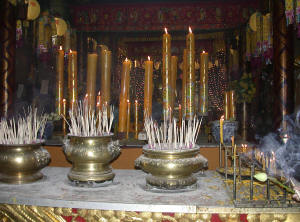
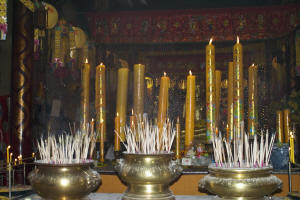
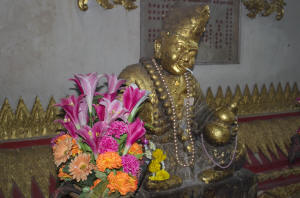
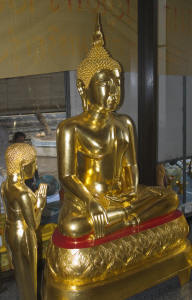
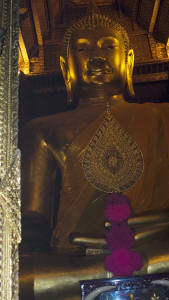
Our next stop was 




